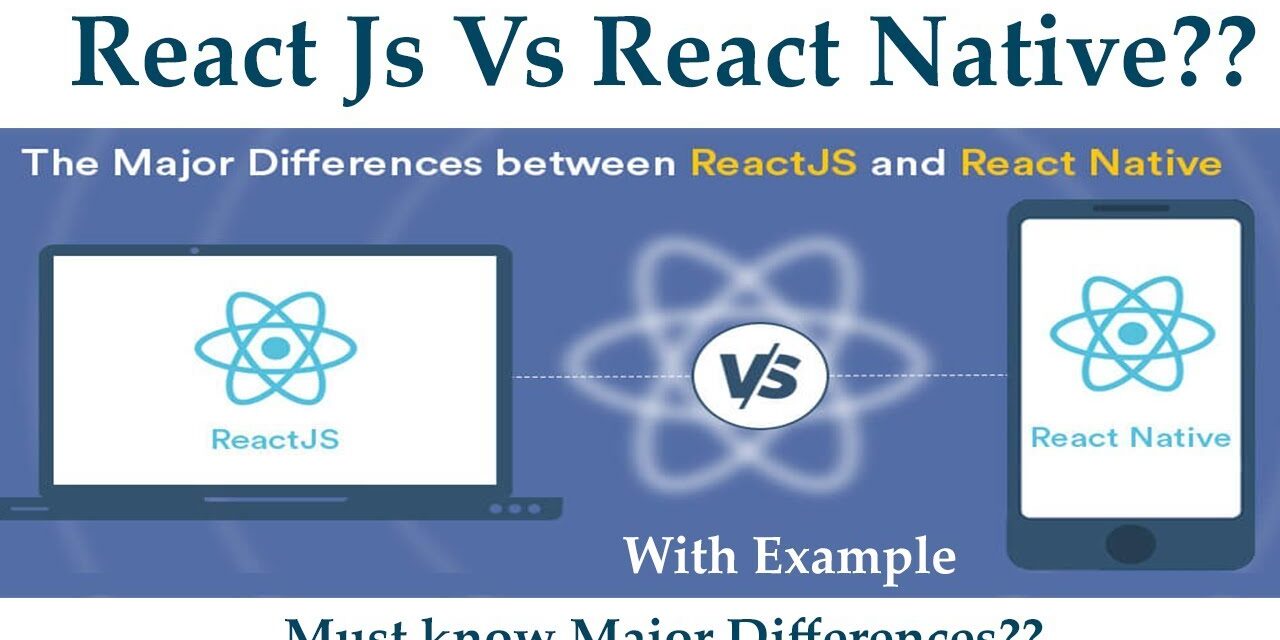React.js was created by Facebook to address its requirement for a dynamic and high performing User Interface(UI). In 2011, Jordan Walke and his group from Facebook delivered the React JS library, a JavaScript library which united the speed of JavaScript and another method of delivering pages, prompting a responsive and dynamic client input. In 2015, two years after the group publicly released React.js and its fame developed, they delivered React Native.
The following is an outline of the business benefits of working with both React.js and React Native. It should give you a reasonable thought of their particular qualities and what makes them extraordinary.
React.js
React.js frequently alluded to as React or ReactJS is a JavaScript library answerable for building an order of UI parts or as such, liable for the delivering of UI segments. It offers help for both frontend and worker side.
Keep in mind, React.js is only the V piece of the MVC system, a library implied for delivering your perspectives.
Business benefits while working with React:
DOM (report object model) is a review concession to information data sources and yields. React’s virtual DOM is quicker than the traditional full revive model, since the virtual DOM invigorates just pieces of the page. The fascinating part is, the group at Facebook didn’t know that halfway invigorating a page would demonstrate quicker. Facebook was simply searching for an approach to lessen their re-form time, and halfway DOM invigorate was only an upbeat outcome. This expands execution and quicker programming.
- You can reuse code parts in React JS, saving you a great deal of time.
- The delivering of your pages totally, from the worker to the program will improve the SEO of your web application.
- It improves the troubleshooting speed making your engineer’s life simpler.
- Indeed, even to those new to React, it is effectively readable. Many structures expect you to gain proficiency with a broad rundown of ideas which are just valuable inside the system. React endeavors to do the inverse.
- You receive the reward of the multitude of headways in the JavaScript language and its environment.
React Native
React Native is a structure for building local applications utilizing JavaScript. React Native aggregates to local application parts, which makes it workable for you to construct local versatile applications. In React JS, React is the base reflection of React DOM for the web stage, while with React Native, React is as yet the base deliberation yet of React Native. So the punctuation and work process stay comparative, yet the segments are unique.
Business benefits of utilizing React Native:
ReactNative accompanies Native Modules and Native parts that improve execution. In contrast to Cordova, PhoneGap, and other cross-stage systems that render code by means of WebView, React Native delivers certain code segments with local API’s.
React Native accompanies every one of the benefits that React.js brought you. React.js centers around a superior UI, so those advantages remain.
You don’t need to assemble similar application for iOS and Android, independently as React Native permits your engineers to reuse the normal rationale layer.
Respond Native’s segment based design permits engineers to fabricate applications with a more dexterous, web-style way to deal with improvement than most half and half systems, and with no web by any means.
In the event that you realize JavaScript, React Native will be not difficult to get, permitting most front-end web engineer to be a versatile designer. All you need to know is JavaScript, stage APIs, some local UI components, and some other stage explicit plan examples and you’re set.
No compelling reason to redesign your old application. You should simply add React Native UI parts into your current application’s code, without modifying.
Local application improvement ordinarily implies shortcoming, more slow an ideal opportunity to sending, and less engineer efficiency. Respond Native is tied in with bringing fast, responsiveness, and dexterity of web application advancement alongside strong preparing and best client experience to the cross breed space, to furnish your clients with a local application experience.
Conclusion
React is a structure for building applications utilizing JavaScript. React Native is a whole stage permitting you to assemble local, cross-stage portable applications, and React.js is a JavaScript library you use for developing a high performing UI layer. React.js is the core of React Native, and it encapsulates every one of React’s standards and punctuation, so the expectation to learn and adapt is simple. The stage is the thing that brought about their specialized contrasts. Like the program code in React is delivered through Virtual DOM while React Native uses Native API’s to deliver parts on portable. React utilizes HTML and with React Native, you need to acquaint yourself with React Native sentence structure. React Native doesn’t utilize CSS by the same token. This implies you’ll need to utilize the vivified API which accompanies React Native to quicken various parts of your application.
Main concern, React is ideal for building dynamic, high performing, responsive UI for your web interfaces, while React Native is intended to give your versatile applications a really local feel.








